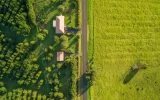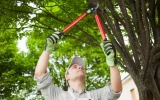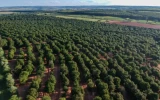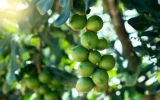How Many Macadamia Trees Can You Grow per Hectare?
Planting macadamia trees too closely can lead to overcrowding and heightened competition for nutrients and sunlight, resulting in reduced productivity. Conversely, spacing the trees too far apart may waste valuable land and decrease the overall efficiency of the orchard. So, what is the optimal number of macadamia trees for a hectare of land?
To strike the right balance, you may consider the recommended spacing of 15 to 20 feet between trees, translating to approximately 278 to 484 macadamia trees per hectare. Such spacing allows each tree to receive adequate sunlight and air circulation, which are essential for its development and nut production.
However, the ideal density may vary based on factors like soil quality, with well-drained and fertile soils capable of supporting higher tree densities. Let's find out other important factors to keep in mind as you plan how many trees to put in your macadamia orchard.
For a new macadamia orchard, targeting an optimal tree density per hectare provides a balance for maximizing long-term yield and economic returns.
Summary
- The optimal tree density of 278 to 484 macadamia trees per hectare encourages more efficient canopy management, enabling better light penetration and air movement throughout the orchard.
- The recommended tree density also ensures better nutrient distribution, as it allows for the effective utilization of soil nutrients by the trees, leading to improved overall health and vigor.
- A higher planting density can increase the chances of effective cross-pollination among macadamia trees, leading to a higher nut set and ultimately a bountiful harvest.
- A higher planting density allows for the efficient use of available land, maximizing the number of trees per hectare and ensuring effective utilization of resources such as sunlight, water, and nutrients.
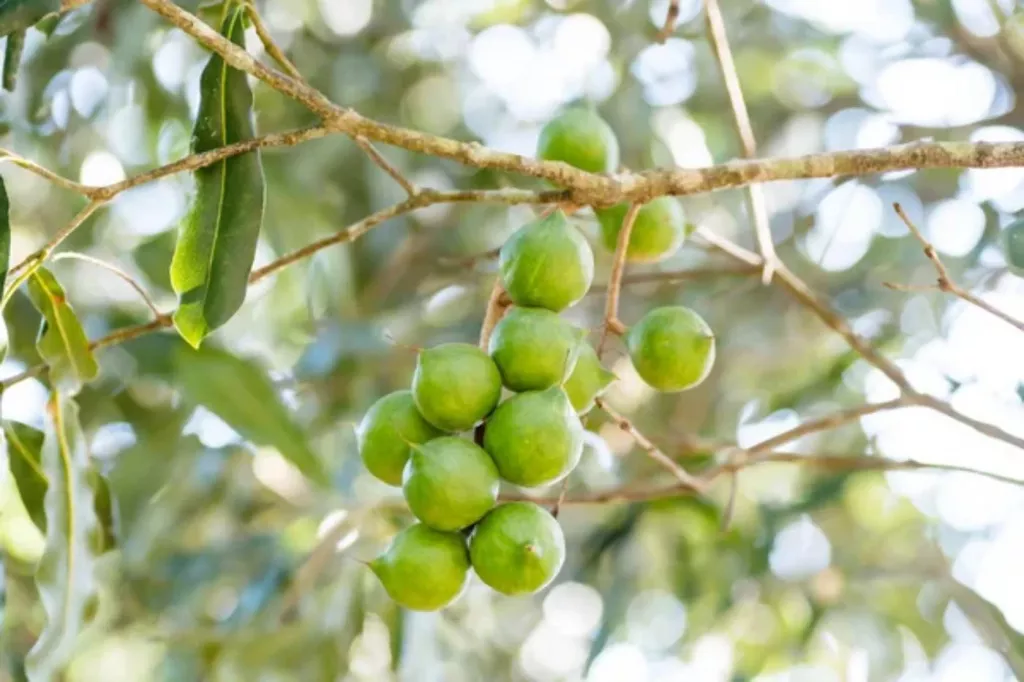
On this page:
The Optimal Macadamia Tree Density per Hectare
The recommended 15 to 20-foot spacing between macadamia trees is crucial for achieving optimal growth and nut production. This spacing translates to approximately 278 to 484 macadamia trees per hectare, allowing each tree to receive sufficient sunlight and air circulation.
By following the recommended spacing guidelines, farmers can optimize the productivity and health of their macadamia orchards, leading to better yields and quality nut production.
The recommended density of 278 to 484 macadamia trees per hectare offers several advantages that make it optimal for orchard management and nut production:
It promotes efficient land utilization
This density allows for the efficient use of land, maximizing the number of trees per hectare without overcrowding, which is essential for achieving high yields.
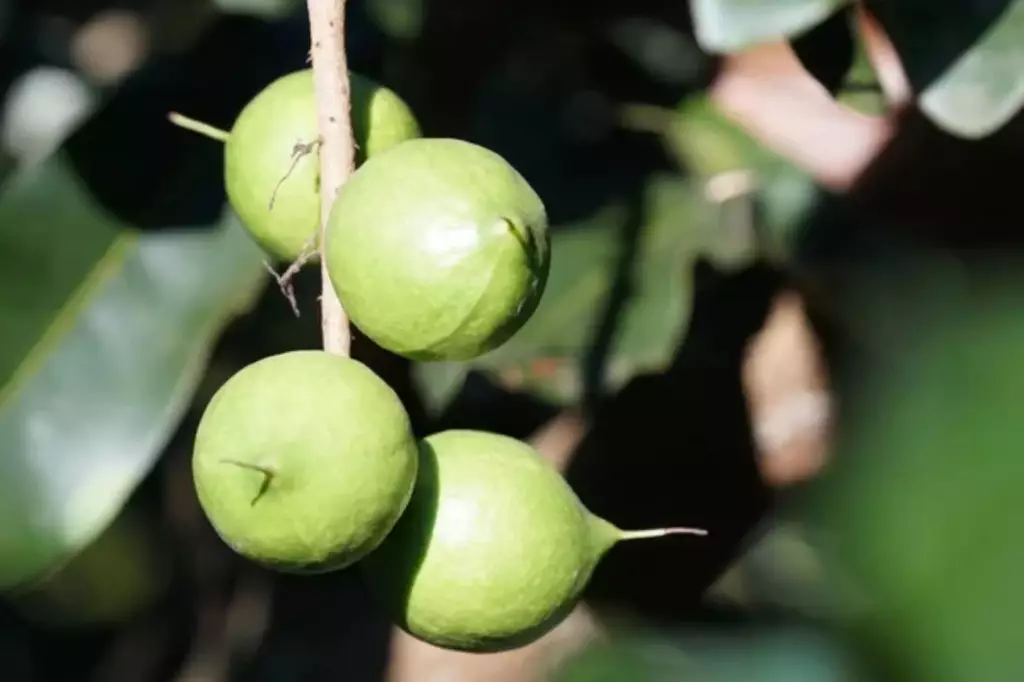
For example, in a macadamia orchard with a density of 400 trees per hectare, there is enough space for each tree to receive adequate sunlight, water, and nutrients. This efficient land utilization not only supports the healthy growth of the trees but also enables easier management practices such as pruning, harvesting, and pest control.
Furthermore, by optimizing land use through the recommended tree density, orchard owners can make the most of their available acreage, leading to increased nut production and overall orchard productivity. This, in turn, contributes to the economic viability of macadamia orchards while also supporting sustainable agricultural practices.
It allows for better nutrient distribution
The optimal density ensures that the available soil nutrients are effectively utilized by the trees, promoting healthy growth and nut production.
For instance, in an orchard with the recommended tree density, the root systems of the macadamia trees can access and utilize soil nutrients more efficiently, leading to improved overall health and vigor. This, in turn, contributes to better nut production and quality.
Furthermore, the balanced distribution of nutrients among trees within the recommended density range supports uniform growth and reduces competition for resources, ultimately enhancing the sustainability of orchard management practices.
By facilitating better nutrient distribution, this tree density contributes to the long-term health and productivity of macadamia orchards.
It encourages more efficient canopy management
Within this density range, orchard managers can more effectively implement pruning practices to maintain an open canopy structure.
This allows for better light penetration and air movement throughout the orchard, which are essential for promoting photosynthesis, reducing disease pressure, and optimizing nut development.
Additionally, the efficient canopy management supported by this tree density helps to prevent overcrowding and minimizes the likelihood of branches and foliage interlocking, which can impede the overall health and productivity of the trees.
It promotes easier orchard maintenance
The manageable density facilitates orchard maintenance activities such as pruning, pest control, and harvesting, leading to efficient management practices.
For instance, with the trees spaced within this recommended density range, orchard maintenance tasks become more manageable and less labor-intensive.
Pruning operations can be conducted with greater ease, allowing for the maintenance of tree health and optimal fruit production. You can check out this article to find out the best time to prune macadamia trees, and how to do it properly.
Additionally, pest control measures can be more effectively implemented, as the manageable density enables better access to the trees for monitoring and treatment.
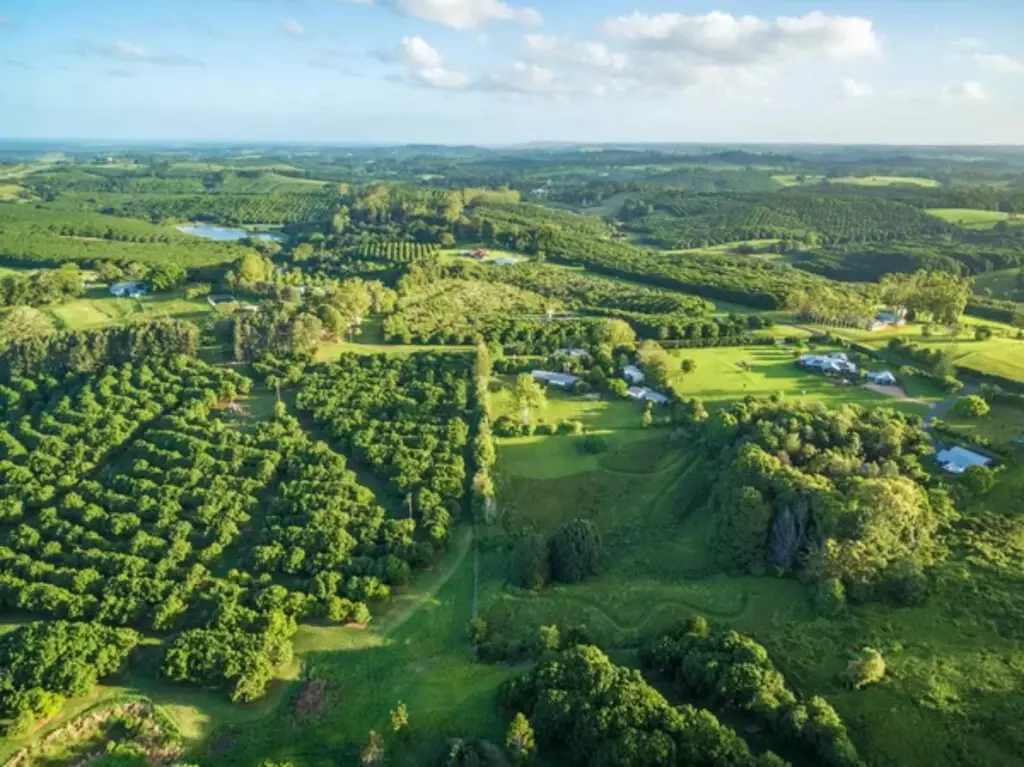
Moreover, during the harvesting season, the recommended tree density allows for smoother and more efficient gathering of the macadamia nuts, contributing to overall operational efficiency and productivity.
It helps prevent the spread of diseases
The spacing between trees at this density helps in reducing the risk of disease spread, as it allows for better air circulation and sunlight penetration, which can limit the spread of fungal infections.
By maintaining optimal spacing, the orchard environment becomes less conducive to the development and spread of certain fungal diseases that thrive in crowded and shaded conditions.
Improved air circulation and sunlight penetration contribute to creating a less favorable environment for disease-causing pathogens, thereby reducing the likelihood of widespread infections within the orchard.
Additionally, the manageable tree density facilitates orchard management practices such as disease monitoring and targeted treatments, further contributing to disease prevention and overall orchard health.
It makes harvesting easy
The optimal density allows for efficient harvesting practices, ensuring that the nuts are easily accessible and can be harvested with minimal damage.
With the trees spaced within this recommended density range, orchard managers and workers can maneuver and access the trees more effectively during the harvesting season. The manageable density facilitates the gathering of nuts without excessive reaching or the risk of damage to the trees or the fruit.
Furthermore, the spacing between trees at this density allows for the use of harvesting equipment, such as mechanical shakers and sweepers, which can efficiently collect the macadamia nuts while minimizing manual labor and potential damage to the trees.
Planting Density per Hectare Can Affect Yield
When it comes to macadamia farming, striking the right balance in cultivation techniques is crucial for maximizing your yields. In this section, let's explore how planting density can lead to a bountiful harvest through several mechanisms:
It allows for efficient use of space
A higher planting density allows for efficient use of available land, maximizing the number of trees per hectare. This ensures that the available resources, such as sunlight, water, and nutrients, are utilized effectively, leading to increased productivity per unit area.
It promotes competition and cooperation
In a densely planted orchard, the trees compete for resources such as sunlight and nutrients. This competition can lead to improved tree architecture and increased flowering, ultimately resulting in a higher yield.
It makes canopy management easier
With an optimal planting density, it is easier to manage the canopy of the macadamia trees. Proper pruning and training of the trees can be more effectively carried out, ensuring that each tree receives adequate sunlight and airflow.
This can help reduce disease incidence and improve fruit quality, ultimately contributing to a bountiful harvest.
It helps set up more efficient pollination
Macadamia trees are partially self-incompatible, meaning they require cross-pollination between different varieties for optimal fruit sets.
A higher planting density can increase the chances of effective cross-pollination, leading to a higher nut set and ultimately a bountiful harvest.
It makes the overall harvest more economically viable
Economies of scale refer to the cost advantages that a business can achieve due to an increase in the scale of production. In the context of orchard management and harvesting, a higher planting density can indeed lead to economies of scale.
When there are more trees per hectare in an orchard, there are several potential cost advantages that can be realized. Firstly, the cost of orchard management per tree can be reduced.
For example, tasks such as pruning, fertilizing, and pest control can be more efficiently carried out when they are spread across a larger number of trees. This can lead to lower costs per unit of production.
Additionally, harvesting costs can be reduced with a higher planting density. When there are more trees in a given area, the efficiency of harvesting operations can be improved.
This is because the proximity of trees can make it easier for workers and machinery to move between them, leading to time and cost savings. Furthermore, the higher yield per hectare from a denser orchard can spread the fixed costs of harvesting equipment and labor over a larger production volume, reducing the cost per unit of yield.
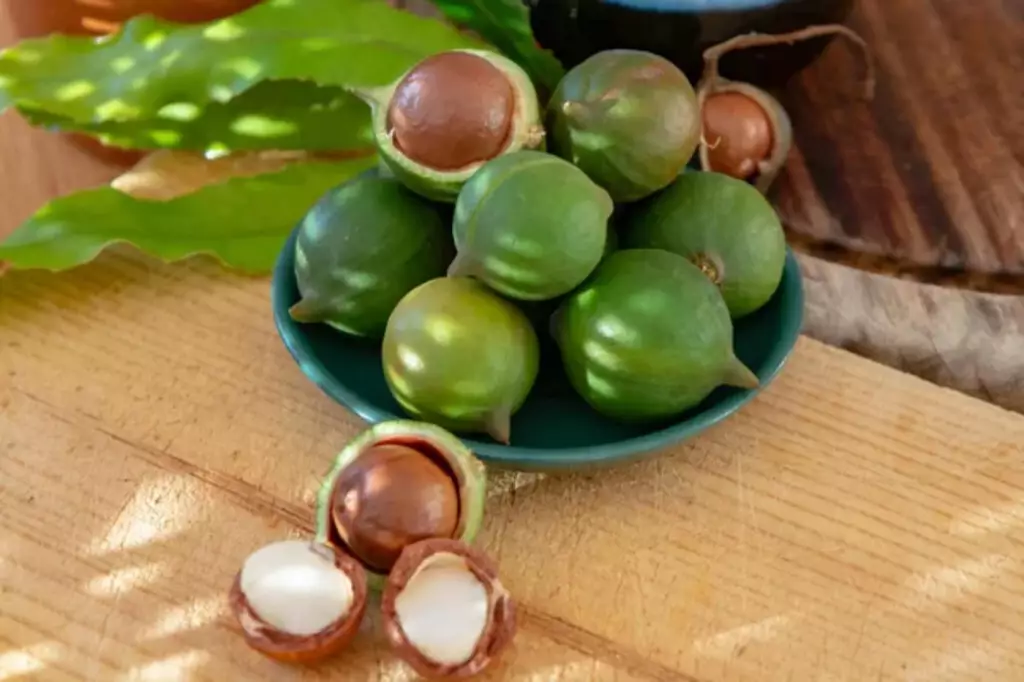
What to Consider When Planning Your Macadamia Orchard Layout
The local climate and growing conditions
Factors such as temperature, rainfall, humidity, and wind patterns can all influence the growth and development of macadamia trees.
In regions with favorable growing conditions, higher tree densities may be feasible, while in areas with more challenging climates, lower tree densities might be more appropriate. To understand the ideal climate for macadamia trees, you can read this article for more information.
Cultivation and management practices
If the orchard utilizes advanced irrigation systems, precision farming techniques, and regular maintenance, it may be possible to support higher tree densities.
On the other hand, if the orchard relies on more traditional or less intensive management practices, lower tree densities may be more suitable to ensure adequate space and resources for each tree.
The characteristics of different macadamia varieties
Different macadamia tree varieties have varying growth habits, canopy sizes, and production potentials. Understanding the specific characteristics of the chosen macadamia cultivars is essential when determining the optimal tree density.
Some varieties may thrive in higher-density plantings, while others may require more space to reach their full potential. If you're looking for the best macadamia tree varieties, you can check them out in this article.
The pollination requirements of different macadamia varieties
Macadamia trees are typically wind-pollinated, but some varieties may benefit from increased proximity to other compatible cultivars for optimal pollination and fruit set.
Considering the pollination requirements of the chosen macadamia varieties is crucial when planning tree density to ensure adequate cross-pollination and fruit yield. If you want to learn how to successfully pollinate macadamia trees, you need to learn what factors affect it.
Orchard layout and infrastructure
The layout of the orchard and the presence of infrastructure such as irrigation systems, access roads, and spacing for machinery should also be taken into account.
Efficient orchard design and infrastructure planning can impact the practicality of higher tree densities and the overall management of the orchard.
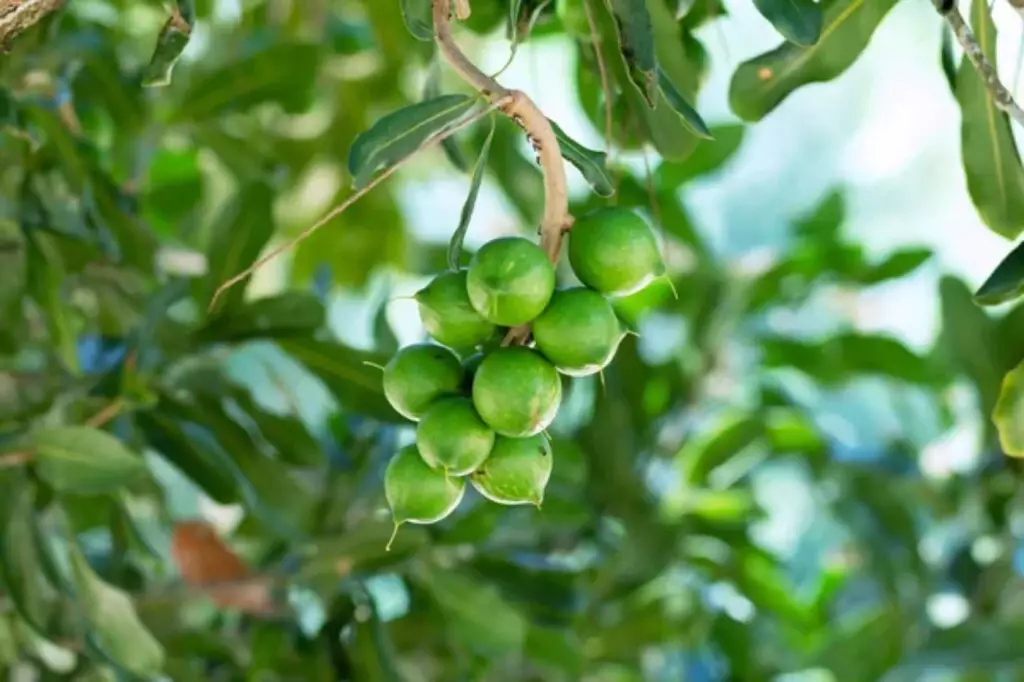
Future growth and development
You might also want to consider the long-term growth and development of the macadamia trees when determining tree density. While higher initial densities may lead to earlier canopy closure and potential earlier yields, it's essential to assess the impact on tree health, resource competition, and long-term sustainability.
